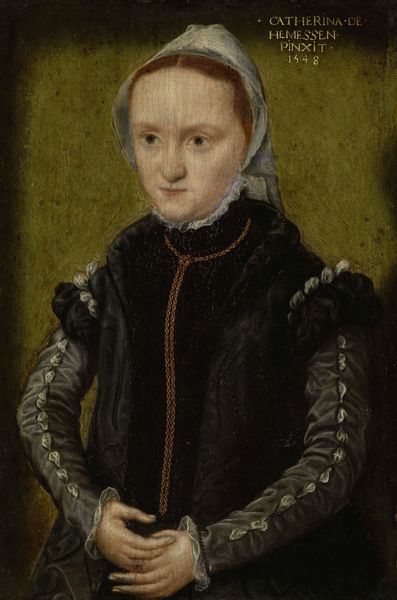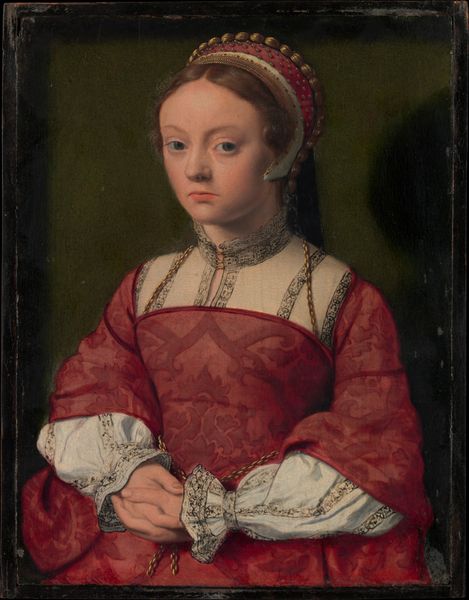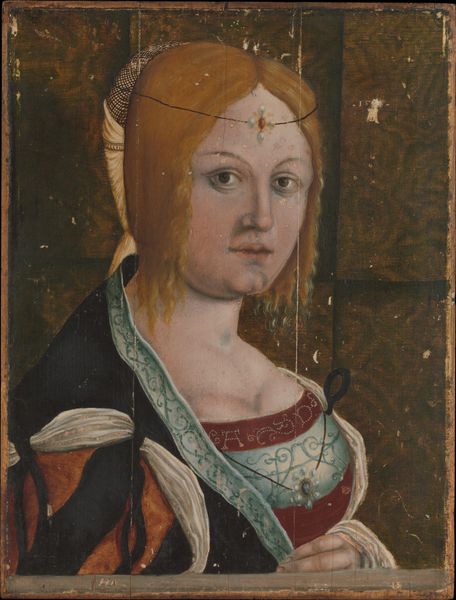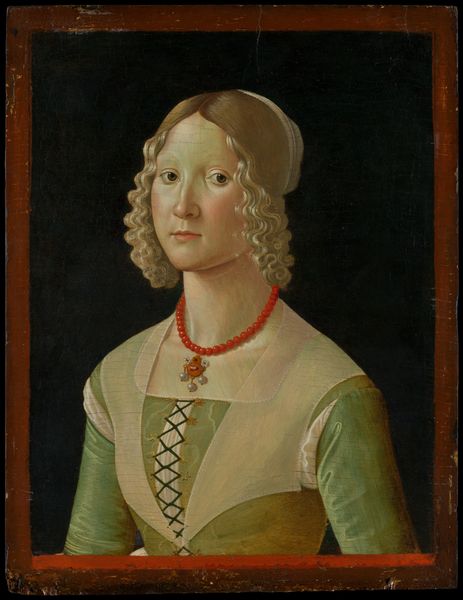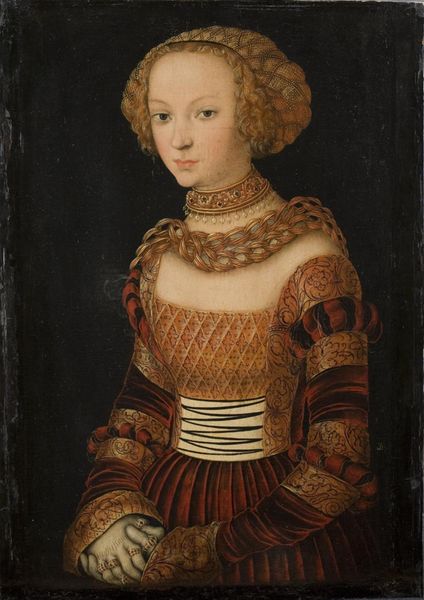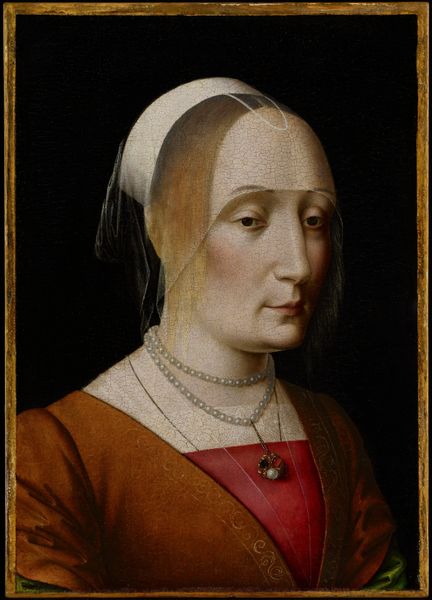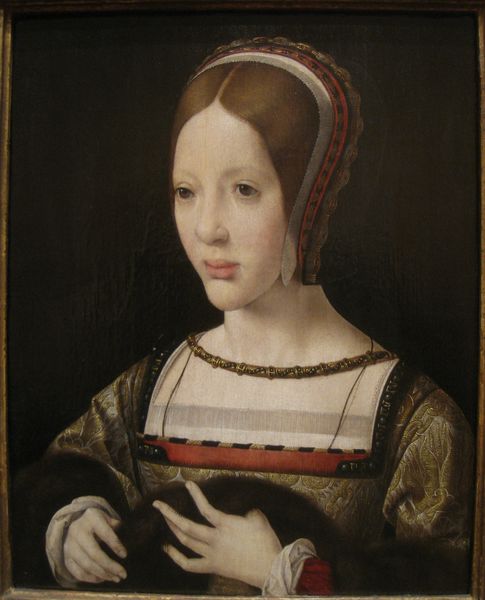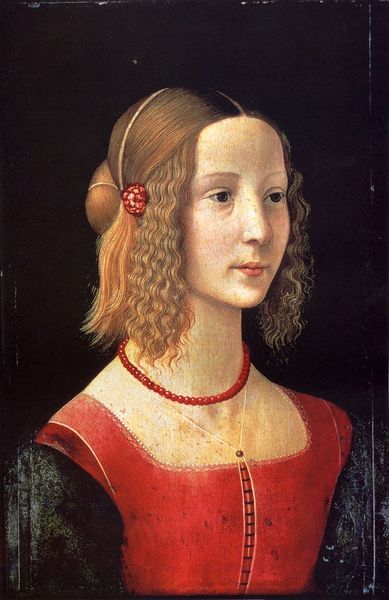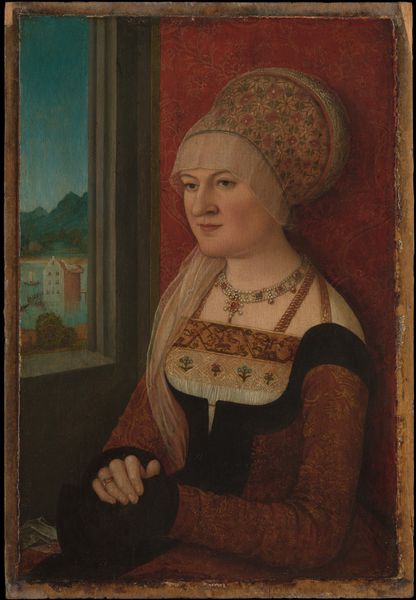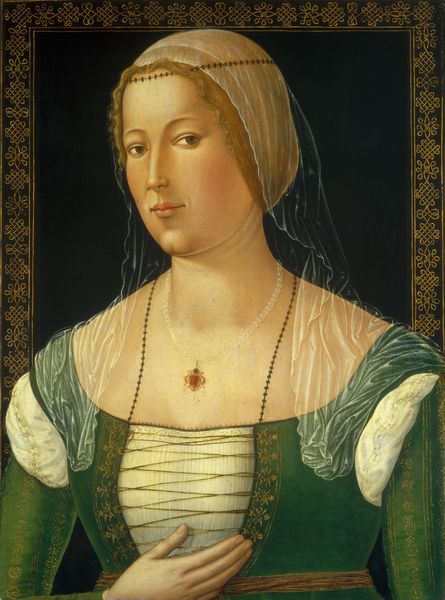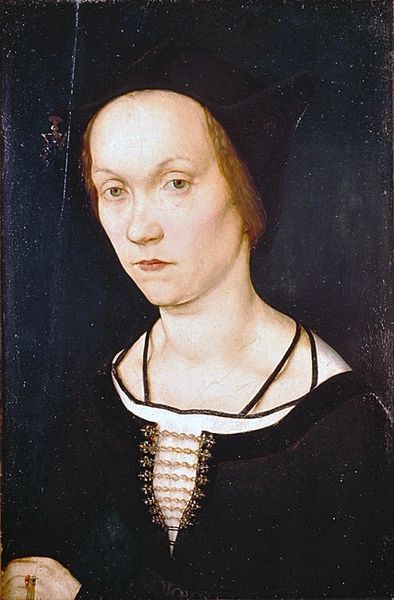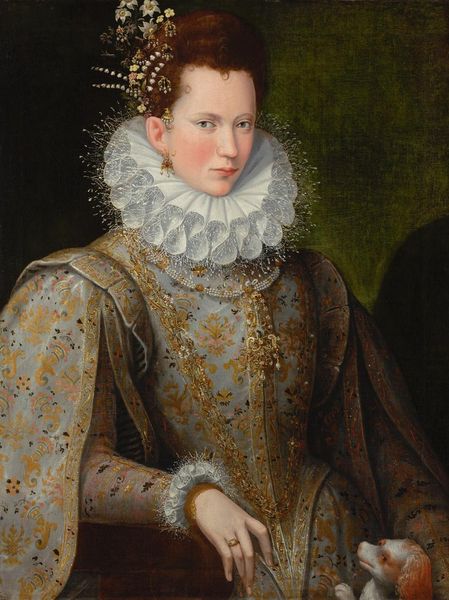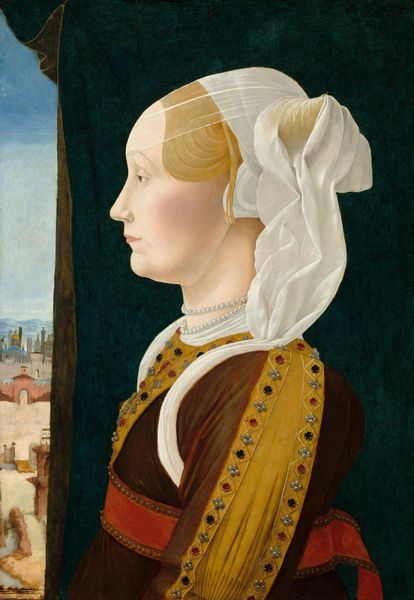
#
character portrait
#
portrait reference
#
portrait head and shoulder
#
animal drawing portrait
#
portrait drawing
#
facial portrait
#
portrait art
#
fine art portrait
#
celebrity portrait
#
digital portrait
Copyright: Public domain
Editor: Here we have Hans Holbein the Elder’s "Portrait of a Woman," painted around 1520. There’s something very composed and almost stoic about her gaze in profile. How do you interpret this work, especially considering its place in history? Curator: It's crucial to view portraits like this within the context of social hierarchies and power. Who commissioned it, and for what purpose? Portraiture in the 16th century was a powerful tool for asserting status, dynastic connections, and projecting a certain image. Do you see anything in her attire or hairstyle that might speak to her social standing? Editor: I notice her simple yet elegant headpiece and the restrained colors of her dress. It feels more bourgeois than overtly aristocratic. Does that tell us something about the shifting patronage of the arts at the time? Curator: Precisely! The rise of wealthy merchant classes created new opportunities for artists. They became patrons, commissioning works to emulate the aristocratic displays of wealth and power. The composition itself – the profile view – echoes earlier courtly portraiture but executed with a restraint that perhaps reflects a different kind of aspiration. What do you think about how she is displayed? Editor: I'd say there isn’t any kind of symbolic flourish around her or visual excess in terms of color usage, suggesting more subdued tastes... It’s less about overt display, and more about...quiet dignity, perhaps? Curator: I think you’ve captured it. It's about conveying respectability and civic virtue, aligning with the values of an emerging urban elite. So while formally echoing courtly traditions, it subtly signals a shift in the very structures of power and representation. Editor: That’s fascinating, viewing it less as simply a pretty picture, and more as a reflection of shifting social currents. I'll never look at a portrait the same way again. Curator: Exactly! Every portrait is not just an image, but an embodiment of cultural forces at play.
Comments
No comments
Be the first to comment and join the conversation on the ultimate creative platform.
